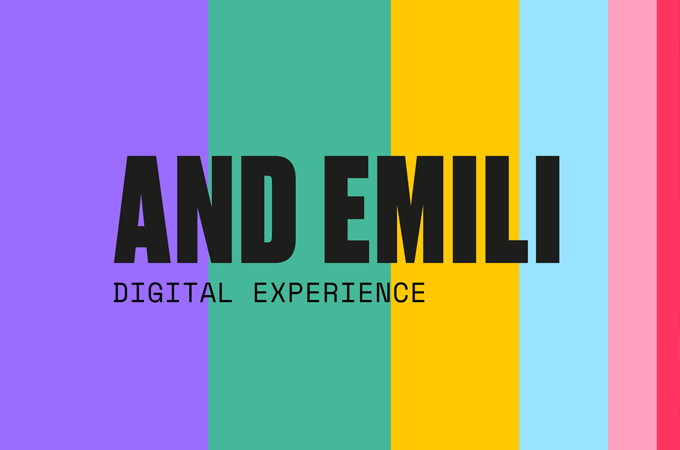What is your brand’s personality?

Every brand has a story to tell and a unique personality, just like people. In this article, we will discuss how important is the brand's identity for creating an authentic connection with the public.
I will show you a concrete example and a proposal for a practical exercise that will help you understand the personality of any brand.
Brand analysis: who is it and who does it want to be?
I’ve learned this concept while I was trying to analyze a brand, an ex client. It was a brand with nearly 150 years of history, very well-known in the city where I used to live; without a doubt, everyone knew it and understood its job. It was a brand that was very well positioned in people’s minds.
This brand wanted to reach its 150th anniversary with a rebranding. It was a good idea considering the many changes that had occurred in 150 years, especially in the last century, during which the brand had embarked on a significant journey of digitalization. The goal was to communicate this transformation, showing that the brand had modernized and sending the message: "I am part of the digital era too."
We can say that this brand was primarily chosen by people over 50, individuals who trusted it because of its history. However, the target audience this former client wanted to reach was people aged between 25 and 40, who usually preferred two other companies, even though all of them offered the same products, services, and prices. Why was this happening?
I began my analysis by conducting a practical exercise, studying my client and its competitors as if they were people. I’ve analyzed their appearance, the way they of talking and communication, their behavior in public spaces, the way their employees dressed, the music or sounds they chose for their offices, the images on their websites or mobile applications, their choice of color palette, the office decoration, the typography and the style of their logos, among other details.
The brand as a person
With all the data I collected, I was able to define the personality of the client brand and those of its two competitors. Below, I will provide a generic analysis of A as the client and B as the two similar competitors:
A
- He is a man.
- He is between 60 and 65 years old.
- He is a sociable person.
- He is formal and respectful.
- He is conservative.
- He prefers traditional media over technology.
- His clothing style is from the '90s.
- His favorite season is autumn.
- He enjoys listening to boleros.
B
- She is a woman.
- She is between 30 and 35 years old.
- She is a sociable person.
- She is formal and respectful but does not believe in hierarchies.
- She is open to new ideas.
- She prefers digital media.
- Her clothing style is a reinterpretation of the '80s.
- Her favorite season is summer.
- She enjoys pop music.
These are some details that allowed me to understand one of the reasons why the new target audience of this client was not choosing its brand, it simply did not represent them.
With this information, along with a market research that had been conducted confirming this hypothesis, the rebranding proposal was based on maintaining the heritage and values of the brand while adapting them to a digital age and presenting it as a person open to new experiences.
Rebranding to reveal the new personality
Below, I list five simple examples of the changes we implemented:
- Renewal of the color palette from pale shades to vibrant colors, always maintaining the original colors.
- Renewal of the logo by simplifying the name to initials (opening up to simplification on social media).
- Changing the tone of voice from formal with hierarchy to formal but having the sender and recipient on the same level.
- Inclusion of images of millennials in both printed and digital communications.
- Expansion of services through the mobile app.
The proposal was executed with the challenge of establishing and positioning the rebranded identity over a period of 10 years. However, results were visible from the launch with simple indicators such as views, interactions and website visits from individuals in the target audience of this client.
La proposta è stata eseguita con la sfida di stabilire e posizionare il brand rinnovato in un periodo di 10 anni. Tuttavia, i risultati sono stati visibili fin dal lancio, con semplici indicatori come visualizzazioni, interazioni e visite al sito web da parte di persone appartenenti al target di interesse di questo cliente.
Conclusions
A brand is not just its products or services but is an entity with its own voice and character. The personality of a brand is essential for its connection with the audience. Like in human relationships, a brand must be authentic and resonate with the experiences and values of its audience. The case of this rebranding demonstrates that by understanding the essence of the brand and adapting it to the expectations of a new public, it is possible not only to maintain the loyalty of existing customers but also to attract new generations.
Every brand has a story to narrate and a personality to project. Defining this personality is the first step in building a meaningful relationship with consumers. So, when you approach your next strategy, ask yourself: what story does my brand tell and how can it resonate with those people I want to reach? Digital transformation is not just a change of format; it is an opportunity for brands to reinvent themselves and connect more authentically with their audience. What is your brand’s personality?

